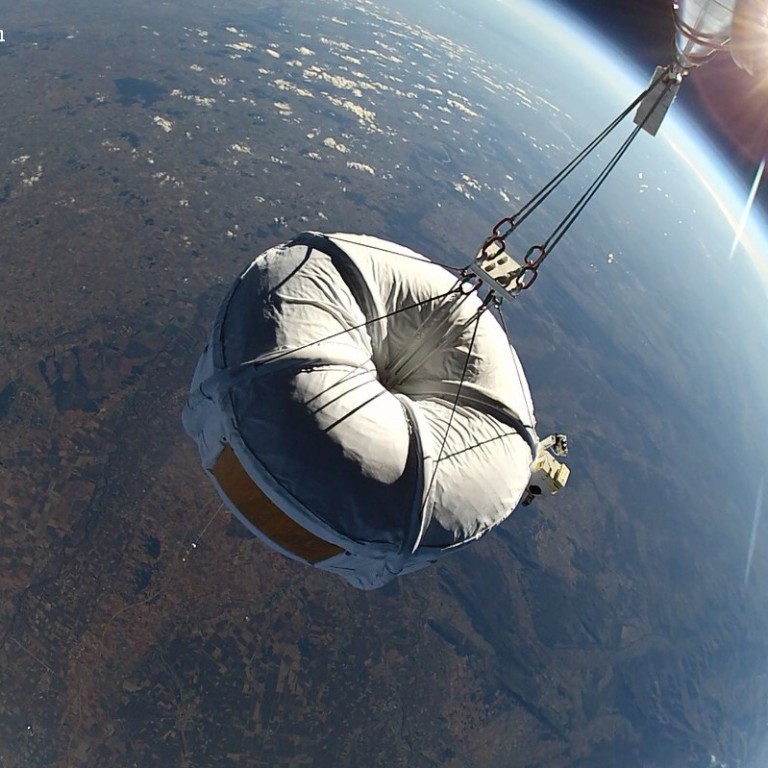
Chinese rocket-balloon launch lifts near-space scientific ambitions
- State media reports say a rocket was fired from a helium balloon in the upper atmosphere
- The technology has potential to save on fuel needed to send up research instruments
Chinese scientists say they have succeeded in test-launching a rocket from a high-altitude balloon, a technology that could save on the amount of fuel needed to lift instruments into near space.
According to state media reports, the rocket first carried into the upper atmosphere by a large helium balloon from Lenghu in northwest China’s Qinghai province on Sunday.
When the balloon reached its designated altitude, the rocket was fired via remote control from the ground, the reports said.
The test was a collaboration between the Institute of Atmospheric Physics under the Chinese Academy of Sciences and Beijing Xingjian Tianhang Space Technology.
“It marked the first substantial technological breakthrough for this kind of rocket launch in the world,” Xingjian Tianhang general manager Zhang Yichi told state-run China News Service, without giving details of the breakthrough.
The Chinese ghost town with a brighter stargazing future
Such rockets can carry scientific instruments to measure conditions for atmospheric studies, Earth observation and other applications.
Compared with conventional rockets launched from the ground, the balloon approach uses much less fuel, is cheaper and is more efficient, according to the media reports.
It could be widely used to explore near space, a region between 20km (12.4 miles) and 100km above the Earth’s surface – altitudes too high for aircraft and too low for satellites.
Balloon-based rocket launches date back to the 1950s when American space scientist James Van Allen first developed the idea of “rockoons” and used them to study the Earth’s magnetosphere.
A researcher from the Chinese Academy of Sciences in Beijing, who has been involved in similar research, said the balloon used in Sunday’s test was a high-altitude, zero-pressure helium balloon.
The researcher, who did not want to be named because of the sensitivity of the technology, said the balloon was made of very thin plastic and filled with a small amount of helium. As it went up, the atmospheric pressure went down, and the helium expanded to fill the volume of the balloon.
“This allows the balloon to reach and remain at a desired altitude before the rocket lifts off,” the researcher said.
He said that such helium balloons usually ascended to 25-40km above the ground, while the rockets could soar to an altitude of 70km and beyond.
Helium balloons have become a subject of intense research and development in China in recent years.
They have potential for a range of applications at different altitudes, but there are technical challenges, including manufacturing such a large balloon, controlling its position and altitude, and even the accurate forecast of wind directions.
The test took place in Lenghu, an area with a Mars-like landscape and good conditions for astronomical observations.



